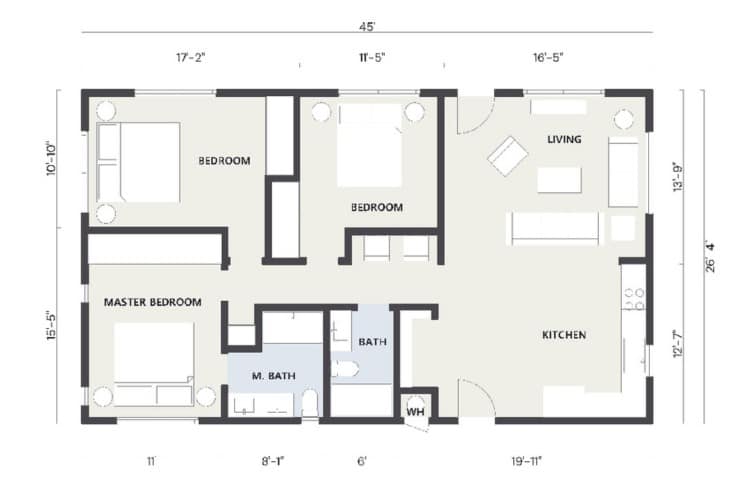Can an HOA Prevent an ADU?
28 min read
If you’re part of a homeowners association and considering building an accessory dwelling unit on your property, it’s key to consider any rules your HOA may have about ADUs, along with your city’s building codes and ordinances. While California law prevents HOAs from banning ADUs outright, it does allow them to place certain restrictions when it comes to appearance and exterior design, placement on the lot, and overall size.

What Power Does an HOA Have in California?
HOAs have tremendous power over the neighborhoods that they govern. They can mandate and enforce certain aesthetic requirements and “community standards.”
These “community standards” typically have to do with how property owners use, maintain, or alter the appearance of their primary residence. There also may be rules that pertain to community living. For example, an HOA may have rules when it comes to street parking, noise levels, and pets. By living within an HOA, you agree to abide by these rules. Failure to do so can result in a fine.
The state of California mostly allows HOAs to set and enforce their own rules without interference. ADUs, however, are an exception. The state of California is invested in the building of ADUs as a way to create more affordable housing units and help alleviate the state’s housing crisis. Because of this, they’ve passed laws that prevent HOAs from banning most ADUs outright. They do allow HOAs to set what is called “reasonable restrictions,” though, when it comes to ADU size and appearance.
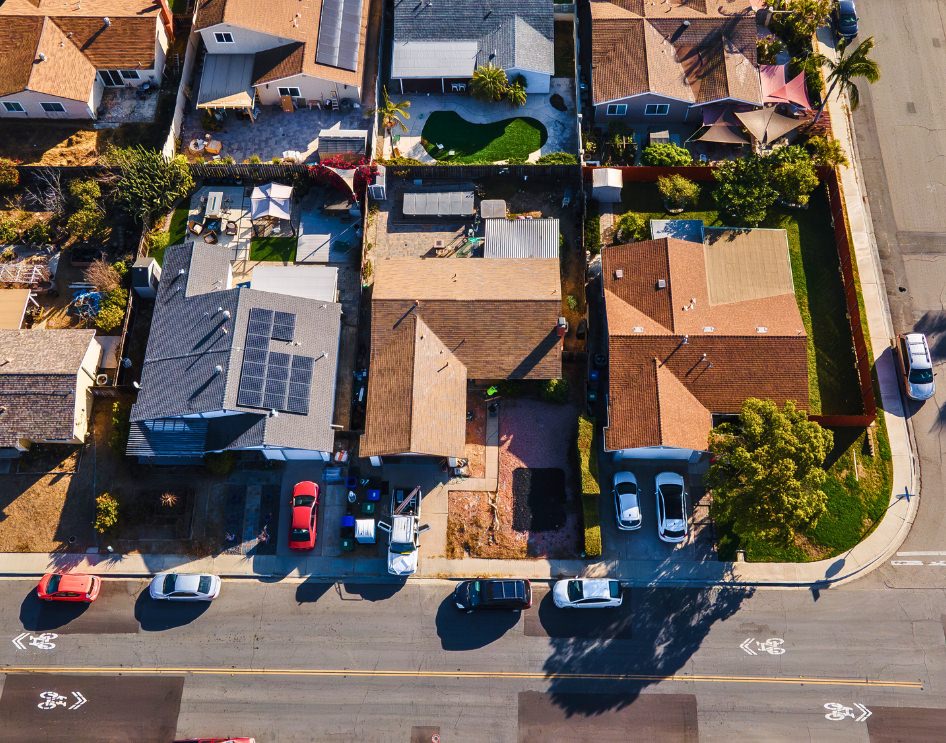
HOAs can enforce community standards but cannot impose restrictions that contradict state ADU laws.
California ADU Laws That Impact HOAs
If you’re a homeowner who is part of an HOA and looking to add a granny flat or casita to your single-family residence, there are 2 laws you should familiarize yourself with: AB 670 and Civil Code Section 4751. These laws prevent HOAs from banning ADUs outright and also stop them from placing burdensome restrictions that might ultimately prevent an ADU build.
AB 670 – Restrictions on Homeowners Associations Regarding ADUs
AB 670 was passed in 2019 to ensure association members maintained certain rights when it came to ADUs. It states that HOAs can’t ban the construction of accessory dwelling units or junior accessory dwelling units (JADUs) outright, though it does allow HOAs to require that homeowners follow certain design standards and height limits when building an ADU on their property. These usually mirror the design standards for the owner’s primary home and the neighboring houses.
Key Provisions
While AB 670 prevents HOAs from banning secondary housing units outright, giving some power back to individual homeowners, HOAs still have the power to place certain restrictions on the building of ADUs.
These include:
- Design standards. HOAs can mandate that any ADUs or in-law units built on a single-family residence follow certain design standards when it comes to style, paint color, etc.
- Setback requirements. An HOA can require that ADUs follow certain setback requirements. These association setback requirements can’t be greater than 4 feet from the rear or side property lines.
- Height & size limits. An HOA can impose certain height or size limits that can differ from those of the city’s building department. For example, while the city of San Diego allows for ADUs to be as large as 1200 square feet, an HOA in San Diego can have a different maximum size.
While AB 670 does allow HOA boards to set certain regulations, these can’t be overly burdensome – Meaning, they can’t be so restrictive that they prevent the homeowner from ever getting past the approval process. These rules are also restricted to the ADU’s exterior. Homeowners maintain the right to choose whatever interior design and floor plan they wish.
Civil Code Section 4751 – Enforcement Against Unreasonable Restrictions on ADUs
Civil Code Section 4751 is part of California’s AB 318, and it provides specific guidelines about what a burdensome or unreasonable restriction might be when it comes to ADUs. For example, if building a guest house would result in huge fees or HOA fee increases, this would be viewed as unreasonable.
Civil Code Section 4751 also allows homeowners to use their ADU as a rental unit without HOA interference. This supports the state’s belief that ADUs are important to help with the state’s housing shortage.
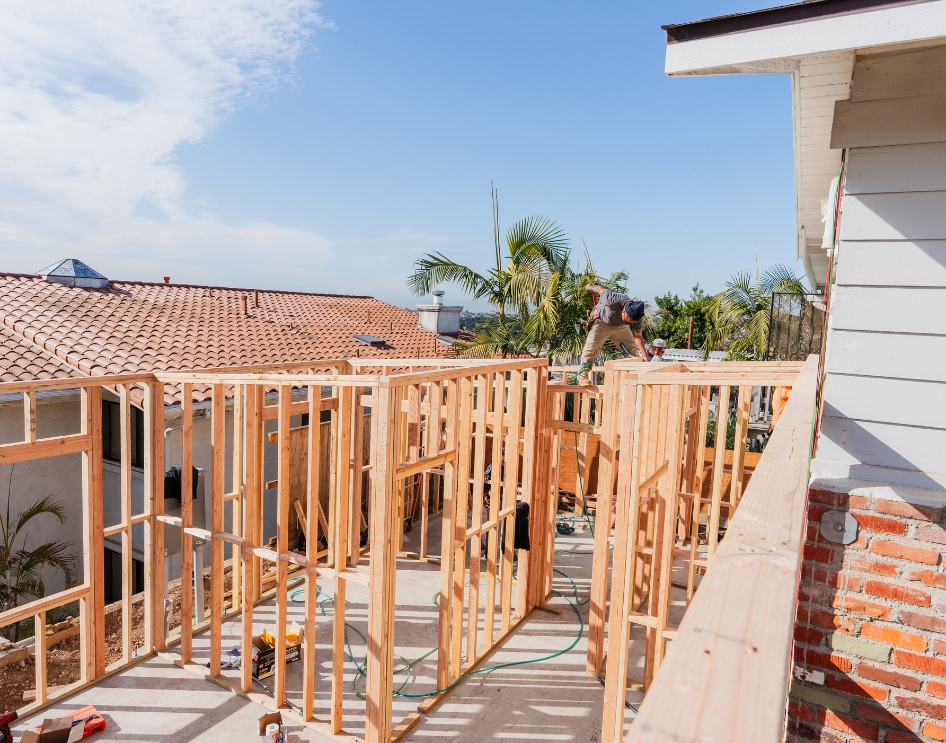
California ADU laws limit HOA restrictions, ensuring homeowners have the right to build with reasonable design standards.
Key Provisions
Civil Code Section 4751 prevents HOAs from placing unreasonable restrictions when it comes to additional costs, design guidelines, or permitting processes that would effectively prohibit the construction of an ADU that otherwise complies with state law. If a homeowner does feel like their HOA restrictions are unreasonable, Civil Code Section 4751 also gives them the right to seek legal advice and even take legal action against the board of directors to get the HOA to change their guidelines.
This provision also prevents HOAs from interfering with a property owner’s right to use their ADU as a rental unit and earn extra income, though it does allow for HOAs to ban short-term rentals under 30 days.
Types of Restrictions HOAs Can Legally Enforce
AB 670 and Civil Code Section 4751 ensure that homeowners maintain the right to build an ADU in their backyard, but they don’t take all power away from HOAs. HOAs still have the right to enforce certain rules.
While “enforcement” doesn’t allow them to prevent ADU construction, it does allow them to fine homeowners on a monthly basis for having an ADU on their property that defies certain rules when it comes to exterior design and overall aesthetics.
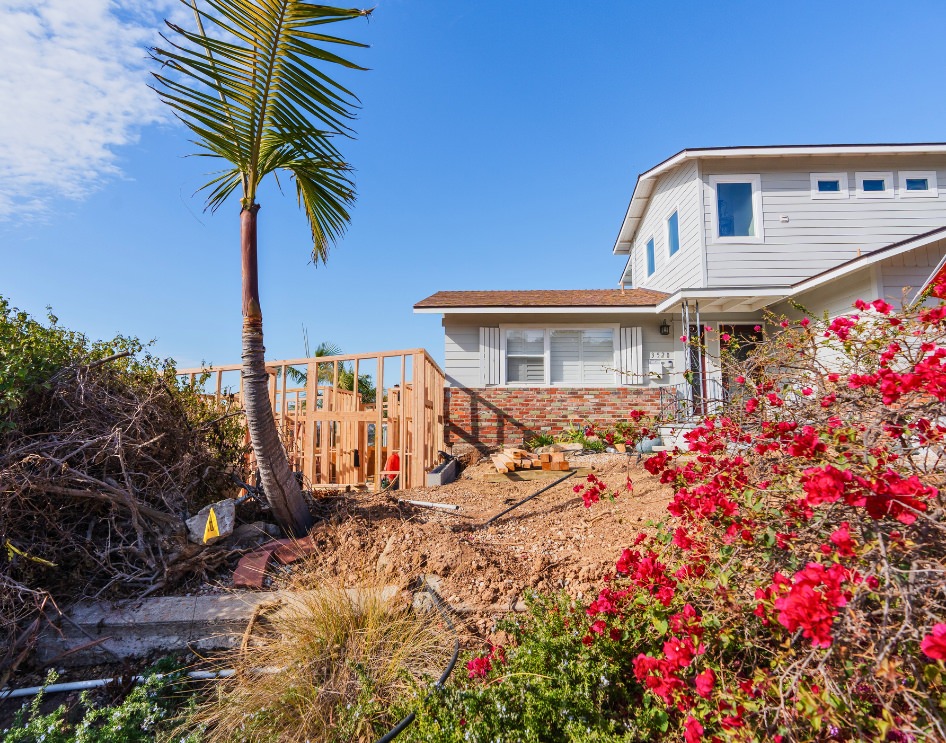
HOAs can enforce reasonable design and setback restrictions but must align with state laws.
Permissible HOA Rules
Permissible HOA rules that can be enforced with fines include:
Design & paint color. HOAs can require that any ADUs be designed in a way that complements the design of the neighboring houses. It can also require certain paint colors or roofing to be used.
Landscaping design. As with primary dwellings, HOAs can set certain standards when it comes to the landscaping of ADUs.
Maintaining certain sight lines. If the association has shared common spaces, like pools or parks, they can require that an ADU not obstruct community views. Maintaining noise and privacy standards. The addition of an ADU isn’t allowed to violate community living standards set forth by the HOA, particularly when it comes to overall noise levels and privacy. For noise, this may mean scheduling construction to fall outside of any designated “quiet hours.”
Reasonableness Requirement
By California law, the above restrictions are all considered “reasonable” because they don’t impede ADU construction and can be achieved by a homeowner without much additional cost. In fact, if you live in an HOA, you’ll notice that many of these provisions are ones you already follow in your single-family home.
Essentially, HOAs maintain the right to enforce the same aesthetic requirements for ADUs as they do for primary dwellings.
Navigating HOA Guidelines for ADU Construction
Before beginning any ADU project within an HOA-governed neighborhood, review your HOA governing documents to understand the restrictions that might be in place when it comes to ADU design. It’s much easier and more cost-effective to design with these restrictions in mind than to have to modify your plans after you’ve already begun the permitting process.

Understanding HOA bylaws and planning in advance saves time and avoids costly revisions during construction.
Reviewing HOA Governing Documents
As an HOA member, you had to sign certain documents before you moved in. These documents outlined any HOA fee structures and bylaws, as well as any Covenants, Conditions, and Restrictions (CC&Rs). It’s in the CC&Rs that you’ll find any restrictions your HOA has outlined when it comes to ADUs.
Seek HOA Approval (When Necessary)
While you as a homeowner have the right to build an ADU regardless of your HOA’s rules, it’s still a smart idea to get your design plans approved by your HOA before you build. It’s a good idea for two reasons: First, it ensures that you read your HOA’s governing documents correctly and won’t incur any fines after the ADU construction is completed. These fines can be billed monthly until modifications are made to bring your ADU up to community standards. Second, getting your design plans approved by your HOA maintains strong community relations, which is essential for maintaining quality of life as an HOA member.
Consulting with Experts
While pre approved plans are readily available online for little or no cost, they may need to be modified to meet your HOA’s standards. This is where an ADU professional like Better Place can help. We help homeowners not only understand and navigate their city’s ordinances but their HOA’s, too, to ensure a smooth construction process from start to finish.
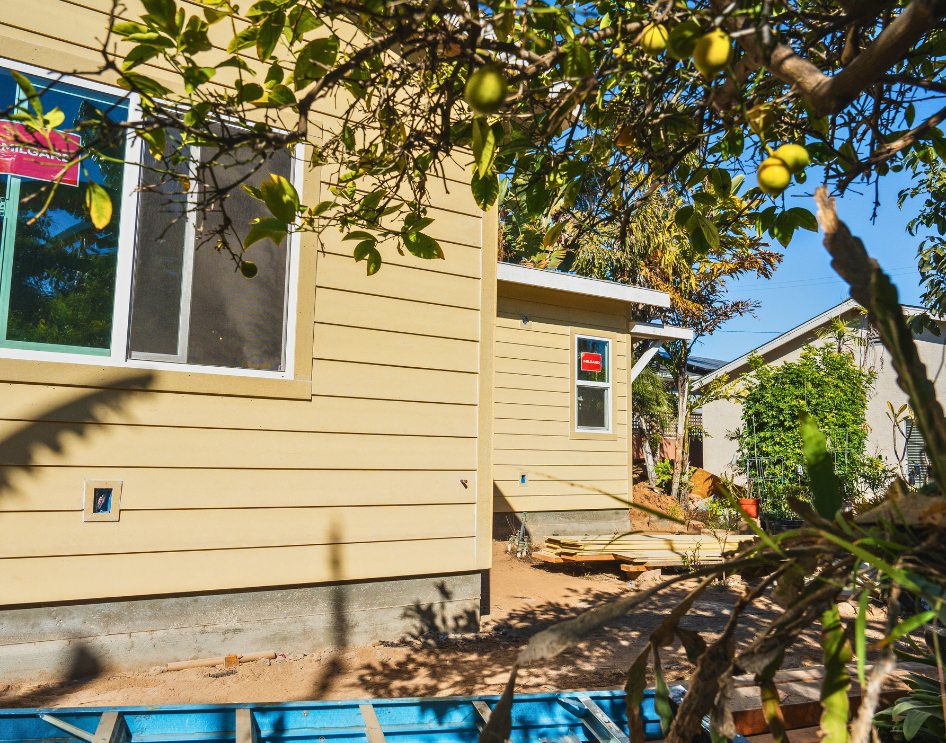
Work with ADU professionals to navigate HOA standards and ensure a seamless construction process that aligns with all regulations.
What to Do if an HOA Blocks Your ADU Project
Legally, an HOA can’t block your ADU project. If an HOA tries to do so or informs you that your ADU design violates community standards, you have 2 courses of action: You can modify your ADU plans to meet community preferences, or you can challenge an unreasonable restriction.
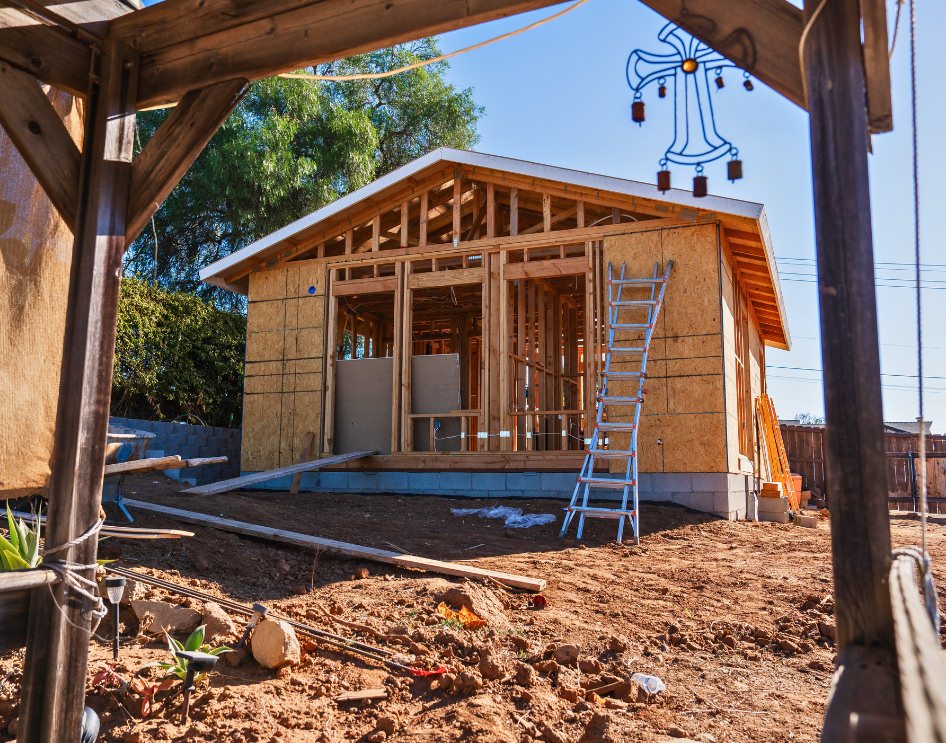
If your HOA blocks your ADU, consult legal experts to challenge unreasonable restrictions under California law.
Challenging Unreasonable Restrictions
If an HOA rejects your current ADU plans due to a restriction you feel is unreasonable (meaning it goes against city or state laws or places an undue burden on your budget or the construction process), you can challenge these restrictions in court. This typically requires consultation with a real estate lawyer.
Alternative Solutions
If an HOA rejects your ADU plans due to its failure to comply with certain setback limits or height limits, this is within their right, and in order to get your plans approved, you must modify them to comply with community standards.
What You Should Know About Building an ADU in Condominiums
Building an ADU or JADU in a condo complex can be more complicated than building in a neighborhood of single-family houses, as condos often share walls, utilities, and other systems that can make building an individual ADU complicated.
While it isn’t always impossible to build an ADU in these situations, it’s something that requires the consultation of your city building department, your HOA, and an ADU expert to see if it’s viable.
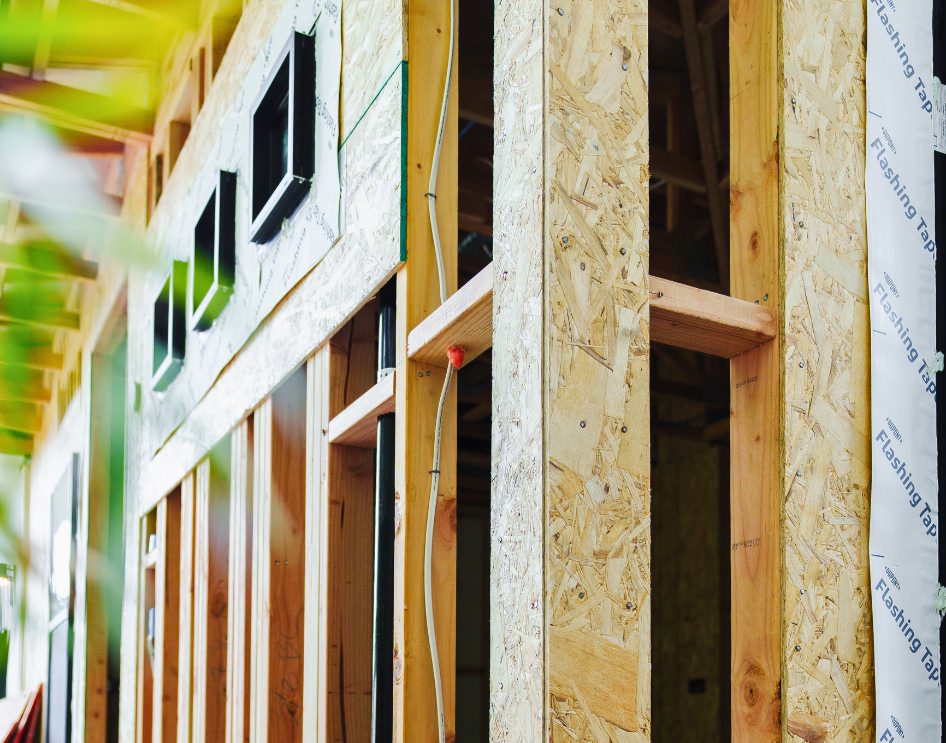
Condo ADUs often face additional hurdles due to shared systems and space—consult experts early to assess feasibility.
FAQs about HOAs and ADUs in California
An HOA can’t legally prevent you from building an ADU, but it can place reasonable restrictions when it comes to its architectural design.
Yes, an HOA can fine you for violations that occur, even if they’re in your backyard behind a fence.
An HOA can’t fine you for building an ADU without approval, but they can fine you for building an ADU that goes against their regulations when it comes to design, height, landscaping, etc.
State law generally overrides HOA restrictions, but HOAs are allowed to impose certain reasonable exceptions that don’t conflict with any state laws.
Work with Experts Like Better Place Design & Build
At Better Place Design & Build, we’re experts at helping homeowners not only design an ADU that meets all their personal requirements, but also those of the state, city, and homeowners association. See what’s possible in your backyard, no matter what kind of restrictions might be in place, by scheduling a free consultation.


